Ngapi chet: a simple to make, incredibly delicious dish from Burma
A family story, a guide to making it, and some notes on the science of umami
Growing up, my parents ran a small catering business. A lot of their employees were from South-East Asia. Occasionally, the food traditions of these people would fortuitously find their way into my life. Sometimes, I'd come home to find trays of homecooked Thai food sitting on the kitchen counter, a gift from Tu, Mum and Dad's Thai friend and employee. Other times, I'd find myself sampling Malaysian sambals or wondering what the new crispy prawn condiment was in the fridge. Most exciting, though, was when I'd clock my Dad behind the stove, making another batch of Melinda's relish.1
Melinda was another of my parents' employees, hailing from Burma. She would often bring to the factory for lunch a sort of relish from her home country - an unbelievably moreish, flavour-packed concoction of cooked-down tomatoes, dried shrimp, onions and garlic. My Filipino mum, whose penchant for funky, fermented flavours is unrivalled, was quick to try the dish. Soon after, Melinda shared the recipe with my parents. And whilst it was my mother who did the majority of cooking for the family, it was my father who grew most fond of making the relish. It became something he would often cook for us all -making a big batch that always seemed to vanish in a few days.
That was a long time ago now. Probably 20-odd years ago. Since growing up, fleeing the nest, moving overseas, living life, etc. I completely forgot about this dish. Even after I started learning about and cooking Thai food rather intensely, the memory of Melinda's relish still lay dormant. Then, one day, a couple of years ago, I was travelling by myself through Phuket, trying to learn more about Southern Thai food. A local lady, Pema, was giving me a tour of the old town. We were eating some dishes at a Burmese tea house, and she commented on tomatoes being the Burmese equivalent of MSG. Instantly, the memory of the relish flooded back - that 'tomatoey', umami-laden, salty, savoury bomb of deliciousness that had been a stalwart of my teenage years. Soon after, I called home and had my Dad send me an old Word document of the original recipe he had taken down years ago.
Ngapi chet
Before I get to the recipe, it's worth attending to the actual dish itself. It appears the dish I am recalling is called ngapi chet and is a staple of Burmese cuisine. Interestingly, the Thai word for shrimp paste, kapi or gapi, was adapted from the Burmese ngapi, which loosely translates to 'pressed fish'. However, in Burmese cuisine, ngapi seems to be more of a catch-all term that includes an array of fermented fish and shellfish condiments - similar to how, in the Philippines, the term bagoong includes both fish and shrimp-based foods.
From my limited research, it appears that many recipes for ngapi chet call for fermented catfish (which my recipe does not have). Equally, different regions and families seem to have their own variations of the dish, with some calling simply for tomatoes, shallots, chillies, garlic, and dried shrimp, much like mine.
Ngapi chet and umami
One of the things that makes this dish so unbelievably tasty is the density of umami flavour contained within. Umami is the so-called ‘fifth-taste’, scientifically discovered by Japanese professor Kikunae Ikeda in 1908. It denotes the pleasing taste of moreish savouriness. Foods like fish sauce, vegemite, miso paste, soy sauce, shrimp paste, doubanjiang, cooked meats, cheeses, bone broths, and tomato sauces are all rich in the taste of umami.
The amino acid glutamate is an essential constituent part of the umami taste. Accordingly, many people associate high-glutamate foods like tomatoes, meat, and mushrooms with the umami flavour. Having said that, the taste delivery of umami is more complex. It involves a synergistic effect between glutamate, the nucleotides inosinate and guanylate, and salt. Inosinate is found in large quantities in meats and fish, whereas guanylate is found in dried mushroom products, like shiitake and porcini, and various fermented foods. Processes like ageing, dehydrating and fermenting can radically boost the levels of both glutamate and inosinate in foods. This is why foods like fish sauce, Parmigiano-Reggiano, katsuboshi, and dried tomatoes are incredibly savoury.
An interesting commonality emerges if you consider this through the lens of some of the world's greatest broths. Take, for example, dashi. The constituent parts are the incredibly glutamate-rich kombu, combined with katsuobushi - a condiment of fermented and dried tuna flakes. Another example is the Chinese superior stock shang tang - my go-to base stock (Substack article incoming!) - made from simmering chicken and pork bones with Jinhua ham bones. Jinhua ham is a food product made through curing, fermenting and ageing. Many Italian brodo recipes call for the inclusion of Parmigiano-Reggiano rind. Many Thai stock recipes include dried shrimp or dried squid. It's clear that you can make an excellent savoury stock from meat alone, which contains decent levels of both glutamate and inosinate. But adding a dried, fermented product can take the umaminess to another level. And no doubt, this principle extends to all dishes.
So it is with ngapi chet, which is packed with umami-dense ingredients. My recipe's core ingredients are tomatoes, dried shrimp, shrimp paste, and fish sauce. The most abundant ingredient, tomatoes, offers a base rich in glutamate, which combines with the three fermented and aged condiments of fish sauce, dried shrimp, and shrimp paste to make a dish that is undeniably one of the more umami-laden dishes you're likely to eat!
The recipe
Below is the original recipe my Dad took down from Melinda years ago. The process is simple, and most ingredients are easy to find in the UK. The two speciality ingredients, dried shrimp and Thai shrimp paste can be found at most East Asian grocers. One caveat: most store-bought shrimp paste is poor quality. I am lucky to have a lot of good quality gapi in my fridge from a few trips to Thailand over the last couple of years. Before that, I would get shrimp paste from Farang Larder, a Thai ingredients shop front operating out of the North London Thai restaurant Farang. If you're not based in London, raan-nuch.co.uk offers a good quality shrimp paste on its website.
The below recipe makes around two cups, which goes a long way. Because it is preserved in oil, it will keep for a long time in the fridge. I often enjoy this relish with rice, eggs, and some pickles for a quick snack. If I'm having people over and cooking a few courses, I'll often serve it to start, alongside crisp raw vegetables and pork rinds, similar to how a Thai nahm phrik might be served as part of a wider meal.
Ingredients
Medium-sized ripe tomatoes, 6
Brown onions, 2
Garlic cloves, 5
Dried shrimp, 6 heaped tablespoons
Finely sliced birdseye chillies, 6
Neutral oil2, 250 ml
Chilli powder, 1 tsp
Turmeric powder, 1 tsp
Salt, 1 tsp
Fish sauce, 5 tbs
Shrimp paste, 1 tsp
In a spice-grinder blitz dried shrimp until very fine. If you don’t have a spice grinder use a food processor. Failing that, a mortar and pestle can be used to pound the shrimp into a powder-like state, but this is a little more laborious.
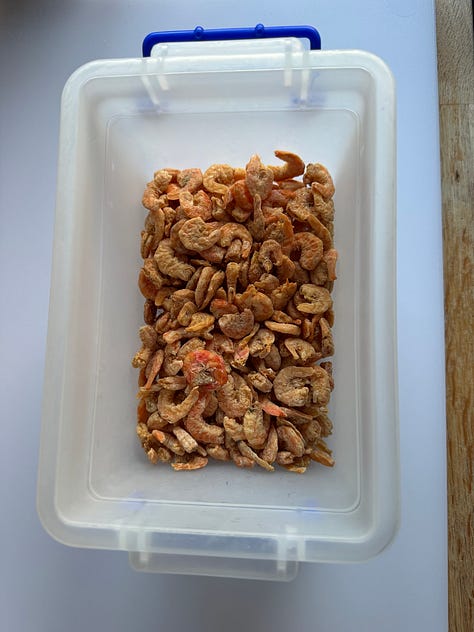
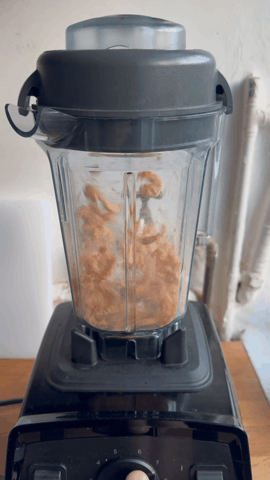
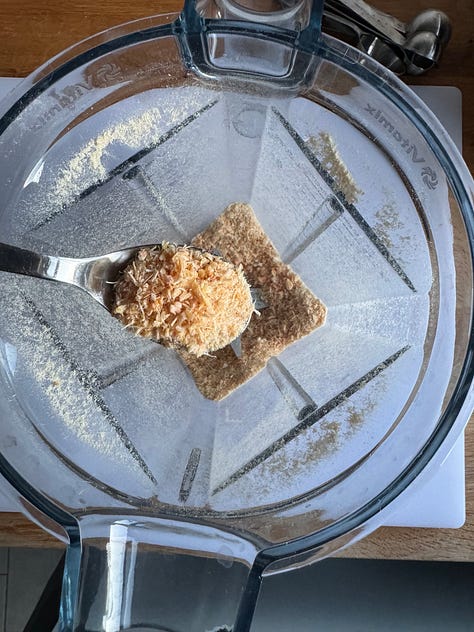
Blend the tomatoes, onions, and garlic.
Add oil to a wok, or saucepan. Place on medium heat and add the tomato, onion, and garlic mixture. Add shrimp paste, fish sauce, salt, turmeric and chillis. At first, the tomato mixture will sit, submerged in the oil.
Cook on medium heat, stirring until virtually all water has evaporated and the colour of the mixture has turned from red to light brown. It should take around about 50 minutes. See the below gif for colour and consistency.
One final note: I have seen varying methods for making this dish. The tomatoes and onions might be chopped instead of blended, and dried shrimp might be roughly cut or added whole. Sometimes less oil is used. Other times, additional ingredients might be added. My point in all this is don’t think you need to follow this recipe too diligently. Ultimately, if you were to roughly chop up some tomatoes and onion, add some shrimp paste, dried shrimp in whatever form, and simmer the mix for a while, seasoning with fish sauce and salt - you’ll be on to a winner, I’m sure.
Enjoy.
Fitting foreign foods into English-language categories can be problematic. I have chosen ‘relish’ to describe this dish as I draw parallels with it and the Thai class of dishes called nahm phrik, commonly referred to in English as ‘relishes’, Equally, I have seen this specific dish described as a ‘chilli sauce’ or even curry sauce, both of which also makes sense.
I use refined olive oil as it's neutral tasting, and I believe it’s the ‘least bad for you’ processed oil (certainly much better for you than canola, rapeseed, corn, soybean, and rice bran oils).


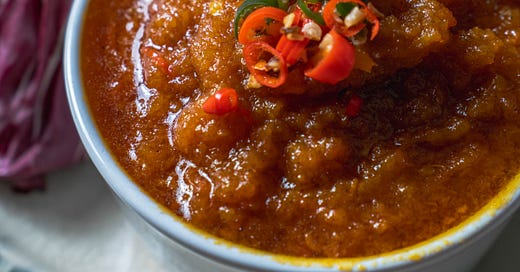



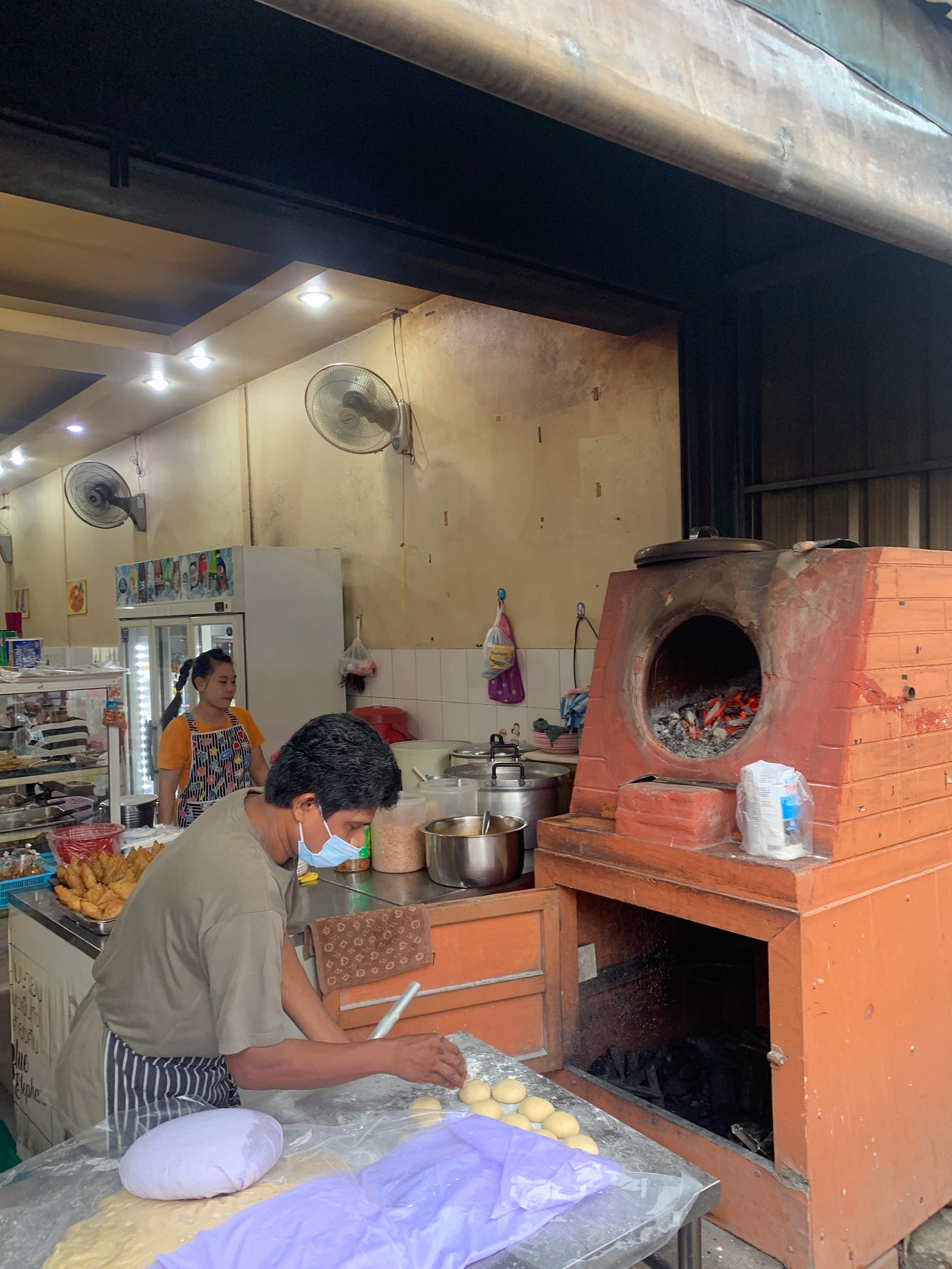


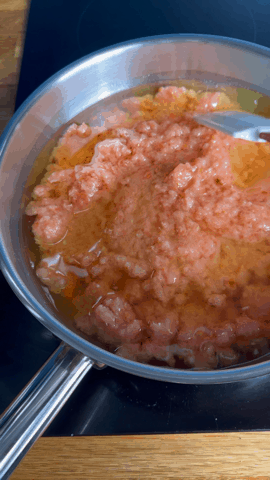
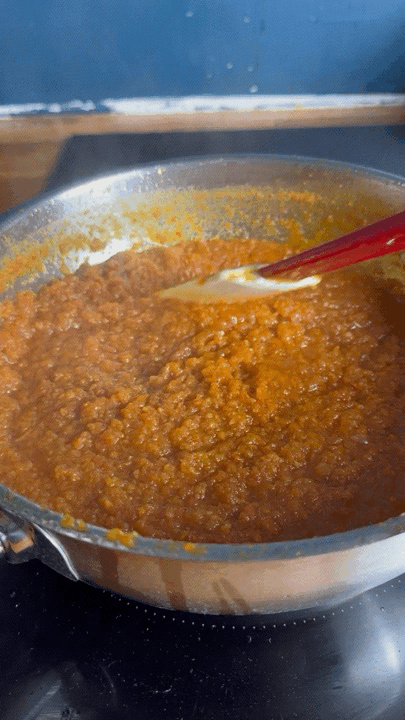
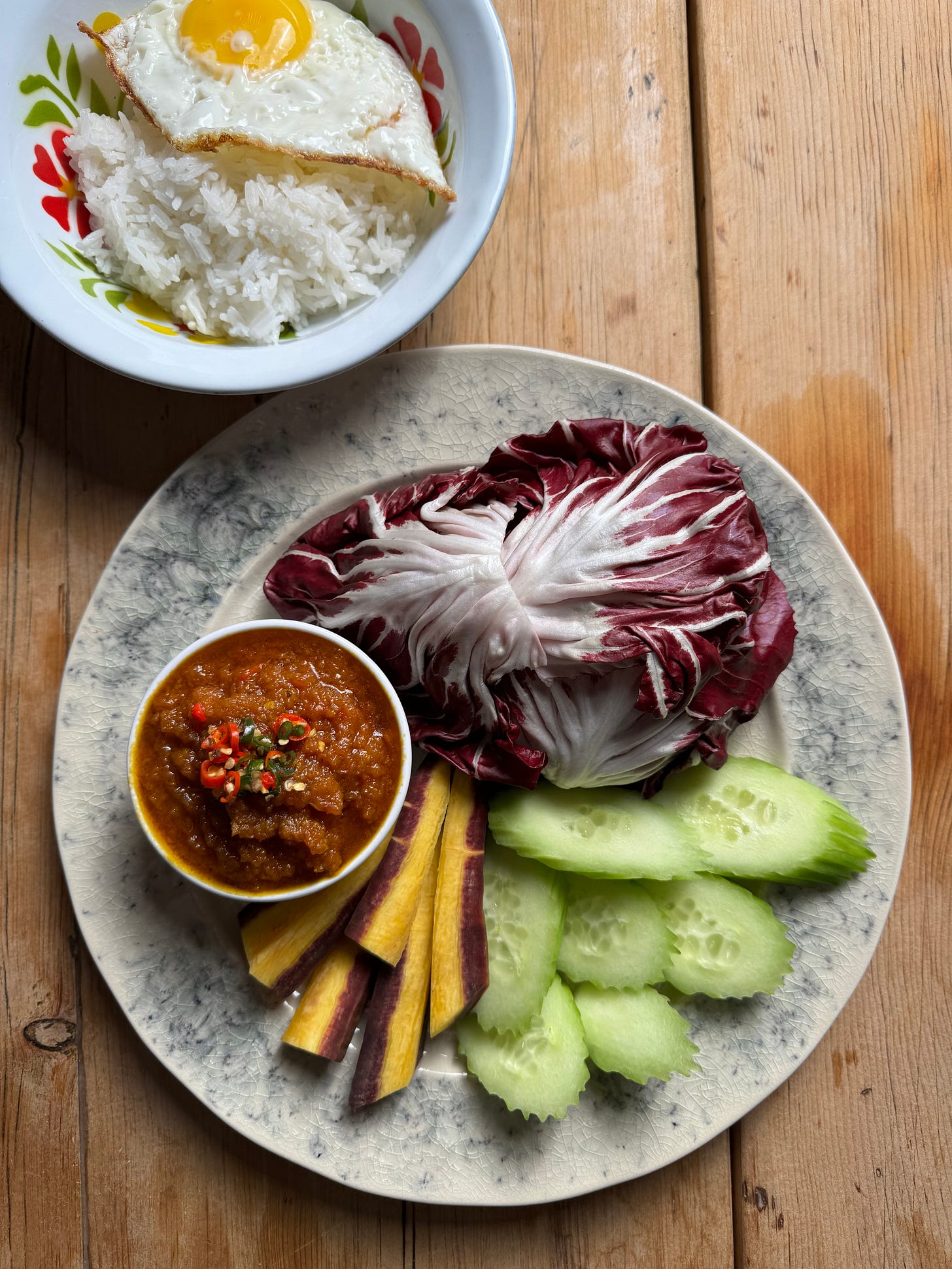
awesome! thank you
Fantastic read mate.